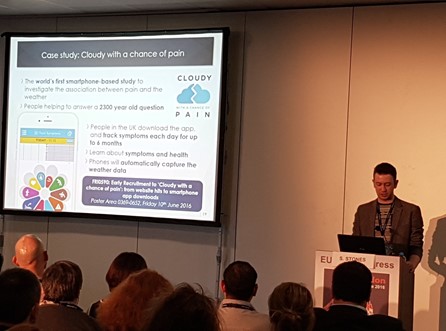Is it not ironic that the scientific community often fails to recognize the public in publications? Academics, publication professionals and pharmaceutic companies have conformed with tradition and erred on the side of caution … retaining the mindset that scientific publications are intended only for research professionals. Although publications rightly serve as the foundation for building the evidence base to advance research and clinical care, that is not their sole intended role.
Publications serve as important vehicles for educating and empowering the patient community – something that has been observed particularly over the past decade. This has coincided with a changing dynamic within healthcare and the pharmaceutical industry, together with the rise of informed and empowered patients advocating for change. Gone are the days of clinician-only congresses. More and more of these meetings have patient and caregiver streams running in parallel with, and even fully integrated into, the programme. If you attend the Annual European Congress of Rheumatology, you will see this for yourself. Patients and caregivers have a full programme of activities, several of which are often joint with healthcare professionals. You will also see them chairing, moderating, presenting posters and presentations, managing patient organization stalls in the exhibition area and much more. As should be the case, patients and caregivers are increasingly being regarded as essential members of the multi-disciplinary team.

Such engagement has, to an extent, been driven – and it will increasingly continue to be driven – by readily available access to research findings in plain language, alongside being valued and welcomed to the table.
Plain language summaries (PLSs) are one of the latest trends within the industry, as exemplified by an increasing focus on PLSs at the conferences of the International Society for Medical Publication Professionals (ISMPP), among other scientific meetings. PLSs are ultimately short research summaries presented in accessible formats for non-specialist audiences. Primarily, these audiences include patients and their caregivers, but they can also be particularly useful to non-specialist healthcare professionals (e.g. those based within primary care) as well as to healthcare professionals with limited time and research experience.
There are, however, different types of PLSs. Confusion may also be created by the use of different interchangeable terms. Therefore, it’s good to set the record straight. First, there are clinical trial summaries that are geared towards trial participants. For these summaries, the scope is narrower, and there are clear guidelines and templates to aid their development. Second, there are PLSs encompassing a wide range of different media, including abstracts, conference presentations and manuscripts.
The increasing interest in publishing PLSs has coincided with the industry’s shift towards more patient-centric healthcare, although there is still a long way to go. The good news is that there are ongoing initiatives looking to provide further clarification and guidance on PLSs. These include Patient Focused Medicines Development (PFMD) guidelines for PLSs and suggestions from a multi-stakeholder ISMPP task force, highlighting key considerations, opportunities and potential barriers for PLSs. These build upon Envision Pharma Group’s co-created PLS toolkit, which evolved from a publication PLS workshop held with PFMD in 2018. The toolkit includes a template, a checklist, lay/sponsor reviewer cover sheets, a glossary and evidence underpinning PLSs.
Importantly, everyone has a role to play in promoting PLSs. Try to constantly ask yourself: “How can I embed the patient and caregiver voice?” By including the plan for PLSs from the outset, you can begin to integrate the patient and caregiver voice over the course of activities. Evidently, there needs to be a clear, fair and transparent process in place, which, in time, should be standardized across the industry. This should include a structured workflow, a consistent lexicon, regular training for all stakeholders involved, and engagement of patients and caregivers throughout the process of writing and reviewing PLSs.
Other key points to consider when developing PLSs of publications include:
- defining the target audience
- agreeing on the content, ensuring comparison with the original publication while providing adequate context for the reader
- using consistent and favourable formats (e.g. infographics)
- striving for inclusivity (e.g.languages other than English, visual accessibility, and varying levels of health literacy and numeracy)
- identifying appropriate places of publication (e.g.journal websites, patient organization websites, congress websites or online open access repositories [e.g. figshare])
- planning appropriate dissemination strategies to engage your target audience (e.g.social media, congress materials, partnering with patient organizations, partnering with patient/caregiver advocates)
- measuring impact and capturing feedback to improve PLSs over time.
With all of that in mind, how are you going to commit to embedding the patient and caregiver voice into your work as a publication professional? Will you initiate the conversation with your client? Will you raise the topic with the publisher? Will you discuss internally how you plan to engage with patient and caregiver advocates to help you design and review PLSs? Every step forward, no matter how small, is important in raising the bar and demonstrating a collective commitment to informing and empowering patients, caregivers and the wider community.
About the author
Simon R Stones is a multi-award-winning Health Advocate and Consultant, recognized on the Shaw Trust Disability Power 100 List as one of Britain’s most influential people living with a disability. You can connect with Simon on Twitter @SimonRStones and via his website www.simonstones.com.
